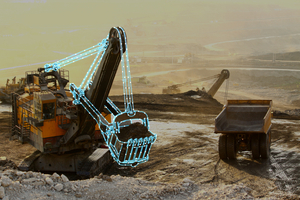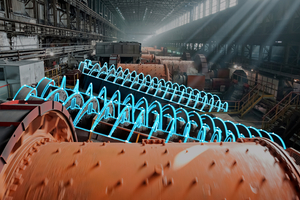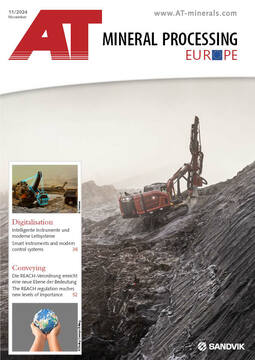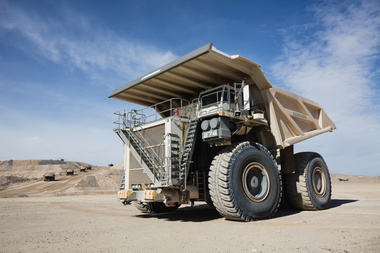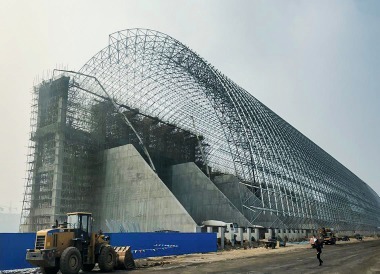Stronger networking through adopting smart instruments and modern control systems
The roadmap to this operational excellence, however, is not always clear. While the importance of higher technology adoption is widely known, there is growing urgency to understand how and where to accelerate future tech investment to holistically optimize the entire mining value chain.
Prioritizing these investments should correlate directly with business objectives. Is your company focused on defining the next world-class mining facility or modernizing an existing one? Are you concerned about equipment reliability, production optimization, sustainable performance – or perhaps all of these and more? These questions can help determine the right approach.
Mining’s digital journey
With clear business objectives, meaningful progress starts with a comprehensive assessment to help establish priorities and create a roadmap with measurable steps along the way, rather than trying to tackle it all at once.
As an industry, a key goal is to move mining operations along the “digital maturity” path – from facilities grappling with data silos to creating connected > automated > optimized > semi-autonomous and, where appropriate, > autonomous operations. This approach considers efficient production, workforce, and other organizational priorities that are vital to successfully implementing new digital projects. Taking all these factors into account is important, because the “right” path forward is different for every mining facility.
Brand-new facilities, naturally, lend themselves to being more advanced technologically, with predictive or adaptive operations. They can be created with the flexibility to continuously evolve and use digital insights to help predict and avoid unexpected challenges that could lead to downtime and safety risks.
But achieving world-class performance isn’t limited to new facilities. Mining and processing operations built years, if not decades, ago are prime targets for modernization. Extracting greater value from installed investments can be achieved by selectively targeting underperforming assets and prioritizing new technologies based on the value they will return. Often, these investments can deliver on multiple key performance indicators or metrics simultaneously:
Increase availability, protect production performance and reduce operating costs and safety risks with equipment monitoring technologies
Reduce energy consumption and lower corresponding emissions with combustion optimization
Increase throughput and simultaneously reduce energy costs with production optimization
A clear business case can not only justify investments, but also can set a baseline to measure performance improvements.
Achieving digital maturity requires boundless automation
Whether upgrading an existing facility or building a new one, industry leaders need a modern architecture for automation and data management. Through “Boundless Automation,” the industry will have access to a modern, software-defined automation architecture connects three distinct, but interdependent computing environments: the intelligent field, edge and cloud. Integrated and aligned by a unifying data fabric, this new architecture will transform how data is accessed and used by powerful software and artificial intelligence.
Pervasive sensing networks deliver valuable insights
As is increasingly true, moving toward more digital operations starts and ends with data. Fortunately, getting more, and better data to inform decisions is easier and more affordable than ever.
Smart wireless sensors are easy to deploy and scale across critical assets, making them an invaluable tool for your operations. This is the foundation of an intelligent field. These sensors measure and analyze critical process and machine health data – from stacker reclaimers and SAG mills to pumps and motors – to predict upcoming maintenance and emerging trends. This enables operations to move toward prescriptive maintenance, fixing potential problems before they become actual problems.
Good data on the health of critical mining equipment helps drive improvement in safety and reliability. For example, an unexpected shutdown of an electric rope shovel is a threat to both personnel safety and production goals. By monitoring vibration of key shovel components, such as the crowd, hoist and swing drives, operators get accurate, real-time assessments of equipment health.
The return on investment from these easy-to-implement technologies can translate into millions of dollars across an enterprise very quickly. One global mining customer turned to Emerson’s AMS Machinery Health Monitor to deliver online condition monitoring at a site, enabling the customer to implement prescriptive maintenance and realize $ 5.8 million in annual savings by fixing potential equipment issues before they lead to unplanned downtime.
Modernizing legacy systems for better decision-making
A major challenge for many mining operators is modernizing decades-old legacy systems – a prospect that requires extensive time, labor and capital expense to convert old infrastructure. Without putting in the time to modernize, systems can generate a lot of independent data with no context – essentially “stranded” data that is siloed and doesn’t support deeper analysis. New technology developments have greatly simplified this process.
Emerson’s DeltaV IO.CONNECT is an easy, cost-effective path to transition to a digital control system with advanced automation features while leaving existing I/O infrastructure in place – eliminating capital costs associated with a total “rip-and-replace” upgrade. This modernization technology enables miners to keep production on pace, minimize downtime, reduce risk and optimize operations. Adopting smart instruments and modern control systems that rescue stranded data is the first step toward becoming a more connected operation along the digital maturity journey.
Delivering optimized and semi-autonomous operations
With a modern architecture that supports Boundless Automation, operations can integrate and contextualize once-siloed data to optimize processes, reliability, safety and sustainability. Technologies in use today are moving toward this vision and predictive operations. One example is Emerson’s DeltaV Edge Environment, which provides secure ways to move data from the automation system to wherever it is needed – on premise or in the cloud – without losing valuable operational context.
For companies, a strong foundation of data combined with a unifying data fabric enables endless possibilities. The AspenTech Inmation data management platform can merge data beyond automation systems, enabling production, maintenance and other decisions based on real conditions. And that data can flow upward, integrating into other higher-level systems to deliver greater operational efficiencies across entire enterprise systems.
In parallel, AI tools such as AMS Optics and AspenTech’s Mtell® help teams leverage valuable, real-time data to build models for predictive and prescriptive maintenance strategies, drive operational certainty and unlock semi-autonomous and autonomous operations. A global mining customer uses Aspen Mtell to proactively plan for maintenance and order spares at scale, protecting more than 210 assets, static and rotating, including truck hauls across 11 sites.
This level of automation provides unparalleled visibility across the entire mining value chain, delivering the right data to the right people at the right time – no matter where they are. With this optimized automation architecture, miners can manage their assets from remote operations centers where engineering, process, reliability and metallurgical experts all inform key decisions.
Future-proofing mine operations
Companies that put a digital maturity roadmap into play are seeing significant gains in operational excellence – but these modernization programs don’t have to be all-or-nothing. While small, disconnected initiatives can cause more stops than starts, using a strategic approach to implement foundational technologies, such as intelligent field devices and connected controls, will pave the way for more advanced applications, software and analytics.
Author:
Sergei Mishin, Sales Director Measurement Solutions, Emerson, Europa

